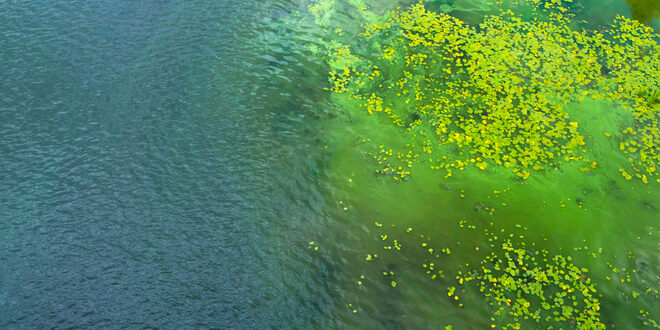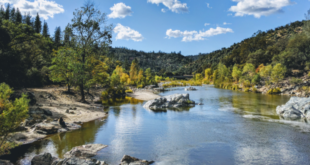The Department of Water Resources (DWR) has increased the Algal Bloom warning at San Luis Reservoir in Merced County to a Danger Advisory. The state is also urging people to avoid physical contact with water and not eat fish or shellfish from the lake until further notice due to the presence of blue-green algae.
Recent lab results showed an increase in toxin levels. Exposure to toxic blue-green algae, also known as cyanobacteria, can cause eye irritation, allergic skin rash, mouth ulcers, vomiting, diarrhea, and cold- and flu-like symptoms. Pets can be especially susceptible because they tend to drink while in the water and lick their fur afterwards. Keep pets away from the water.
Bloom conditions can change rapidly, and wind and waves may move or concentrate the bloom into different regions of the reservoir. The algal bloom can accumulate into mats, and scum, form foam at the surface and along the shoreline, and range in color from blue, green, white, or brown.
State guidelines on cyanobacteria and harmful algal blooms recommend the following precautions be taken in waters impacted by blue-green algae:
- Take care that pets and livestock do not drink the water, swim through algal blooms, scum, or mats, or lick their fur after going in the water. Rinse pets in clean water to remove algae from fur.
- Avoid wading, swimming, or jet or water skiing in water containing algal blooms, scum, or mats.
- Do not drink, cook, or wash dishes with untreated surface water from these areas under any circumstances. Common water purification techniques such as camping filters, tablets, and boiling do not remove toxins.
- Do not eat mussels or other bivalves collected from these areas. No fish should be consumed under a danger advisory.
- Get medical treatment immediately if you think that you, a family member, friend, pet, or livestock might have been poisoned by blue-green algae toxins. Be sure to alert medical professionals to the possible contact with blue-green algae. Also, make sure to contact the local county public health department.
For more information on a danger advisory, go to Harmful Algal Bloom website under Advisory Signs.
 California Water News Daily Your Source For Water News in California
California Water News Daily Your Source For Water News in California


